#jorge donn
Text
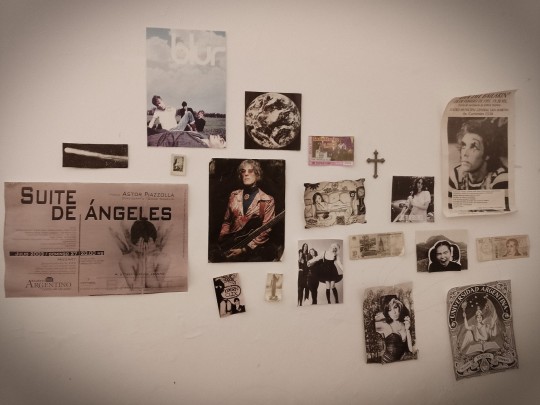
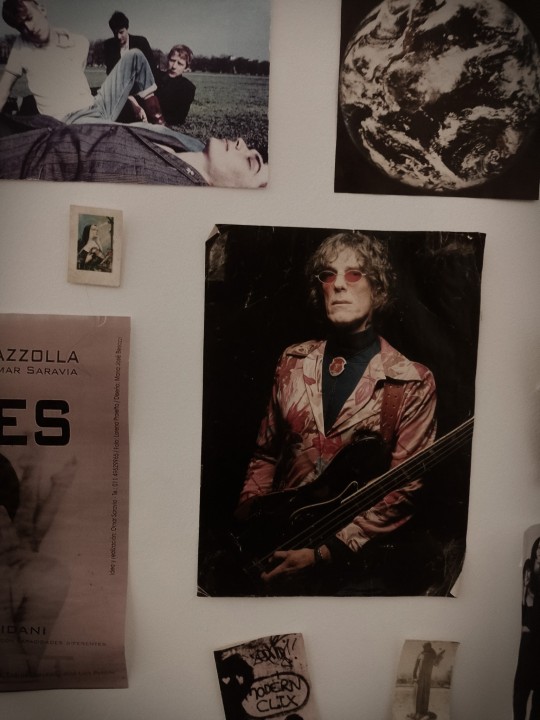

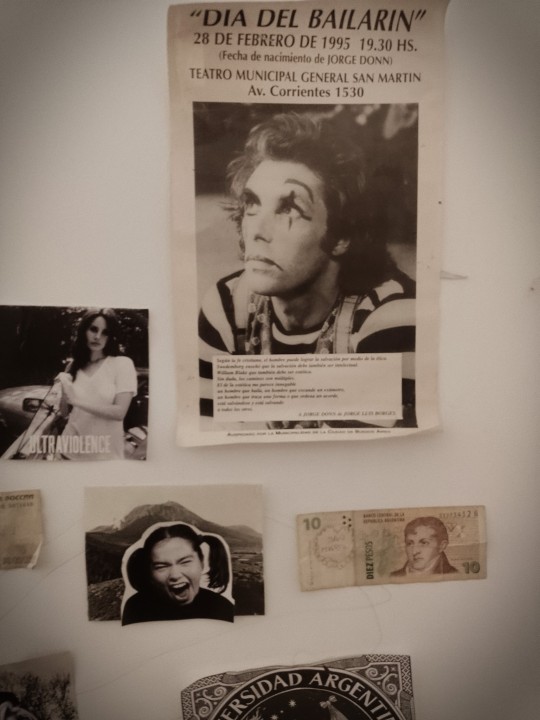
my wall :3
#argentina#girl core#jorge donn#ballet#lana del rey#girlblogger#girlhood#girlcore#just girly thoughts#coquette#manic pixie dream girl#this is what makes us girls#2014 nostalgia#ethereal#courtney love#bjork#spinetta
20 notes
·
View notes
Text

Jorge Donn, 1987
📷Henry Leutwyler
#ballet#giselle ballet#dancers#ballet dancer#ballerino#ballerina#male ballet#jorge donn#henry leutwyler
22 notes
·
View notes
Text

Paolo Bortoluzzi | Maurice Béjart | Jorge Donn | Teatro alla Scala | Photo by Erio Piccagliani
#paolo bortoluzzi#maurice béjart#maurice bejart#jorge donn#balletphotography#ballet slippers#ballet history#vintage ballet#teatro alla scala
17 notes
·
View notes
Text
watching bejart's choreography to umm kulthum performed by donn is a nice reminder that gayboys and their divas always had beautifully symbiotic relationship
1 note
·
View note
Text
THIS DAY IN GAY HISTORY
based on: The White Crane Institute's 'Gay Wisdom', Gay Birthdays, Gay For Today, Famous GLBT, glbt-Gay Encylopedia, Today in Gay History, Wikipedia, and more … February 25




1937 – Severo Sarduy, born in Camagüey, Cuba (d.1993) was a Cuban poet, author, playwright, and critic of Cuban literature and art.
He went to Havana in the mid-1950s to study medicine. Though he did not finish his studies, he retained a lifelong interest in science. While living in the capital he pursued his vocation for poetry and painting and came into contact with older writers such as José Rodríguez Feo and José Lezama Lima.
With the advent of the revolution in 1959, Sarduy became one of a group of young writers given the task of renewing Cuban literature. Sent to Paris by the government in 1960 to study art at the École du Louvre, Sarduy decided not to return to Cuba when his scholarship ran out a year later. Disaffected with Castro's regime and fearful of its persecution of homosexuals and the censorship imposed on writers, Sarduy never went home.
In Paris, he was connected to the group of intellectuals who produced the magazine Tel Quel, particularly to philosopher François Wahl, with whom he was openly involved.
Sarduy worked as a reader for Editions du Seuil and as editor and producer of the Radiodiffusion-Télévision Française.
In 1972 his novel Cobra won him the Medici Prize. He was among the most brilliant essayists writing in Spanish and "a powerful baroque narrator, full of surprising resources.".
As a poet, he was considered one of the greatest of his time. He was also a more or less secret painter; a major retrospective of his work was held at the Reina Sofía Museum of Madrid after his death. He died due to complications from AIDS just after finishing his autobiographical work Los pájaros de la playa.
Sarduy's posthumous Pájaros de la playa (1993; "Beach Fowl") is about a sanatorium for sufferers of AIDS, the disease that killed the author.


1942 – John Saul is an American author of suspense and horror novels. Most of his books have appeared on the New York Times Best Seller List.
Born in Pasadena, Saul grew up in Whittier, California. He went on to several colleges, variously majoring in anthropology, liberal arts and theater, but never obtained a degree. After leaving college, Saul decided to become a writer, and spent fifteen years working in various jobs while trying to improve his craft.
Prior to the start of his bestselling thriller career Saul had around ten books published under pen names, the first of which he wrote in one weekend after unexpectedly losing his job. His first book sale earned him just $200. Today he has over 60 million books in print.
In 1976, Dell Publishing contacted him and asked if he'd be interested in writing a psychological thriller. The resulting novel, Suffer the Children, appeared on all the bestseller lists in the United States and reached the number one spot in Canada. Cry for the Strangers was made into a film of the same name in 1982.
In addition to his novels, Saul has had several one-act plays produced in both Los Angeles and Seattle.
Saul lives part-time in the Pacific Northwest, both in Seattle and in the San Juan Islands, and has a residence on the Big Island of Hawaii. Saul is openly gay. He lives with his partner of 32 years, who has collaborated on several of his novels. He is a frequent speaker at the Maui Writers' Conference.


1947 – Jorge Donn was an internationally-known ballet dancer. (d.1992) He was best known for his work with the Maurice Béjart's Ballet company, and his participation as lead dancer in Claude Lelouch's film Les Uns et les Autres.
Jorge Donn was born in Buenos Aires, Argentina. He began to dance when he was 4 or 5 years old, then studied at the Colon Theatre school. In 1963, he arrived in Brussels to work in the Maurice Béjart company and soon became its principal dancer, entering into a twenty-year professional and personal relationship with Béjart.
Many of Béjart's works were created expressly for him: Bhakti (1968), Nijinsky, Clown of God (1971), Golestan, or The garden of roses (1973), Ce que l'amour me dit (1974), Notre Faust (1975), Léda (1978), Adagietto (1981) and others.
In 1976, Jorge Donn became artistic director of the Béjart's Ballet of the Twentieth Century company. In 1988, he founded his own company, L'Europa Ballet, which existed for a short time.
Jorge Donn died of AIDS on 30th November 1992 in Lausanne. Many choreographers created ballets as a tribute to him: Maurice Béjart (Ballet for Life), Denys Ganio (Tango... a rose for Jorge Donn), Carolyn Carlson (Homage for Jorge Donn), Grazia Galante (Masticando Sueños)


1950 – The Irish director Neil Jordan was born today. An Academy award-winning Irish filmmaker and novelist. He received the Academy Award for The Crying Game. As a writer/director, Jordan has a highly idiosyncratic body of work, ranging from mainstream hits like Interview With the Vampire to commercial failures like We're No Angels to a variety of more personal, low-budget art-house pictures.
Although in a conventional heterosexual marriage, unconventional sexual relationships are a recurring theme in this gay-friendly director's work, and he often finds a sympathetic side to characters audiences would traditionally consider deviant or downright horrifying. His film The Miracle, for instance, followed two characters who struggled to resist a strong, incestuous attraction, while The Crying Game made complicated, likable characters out of an IRA terrorist and a Transgendered woman. Vampire, like the Anne Rice book it was based on, focused on the intense sexual relationship of two undead men who murder humans nightly (although the pair never have sex, they are clearly lovers of a sort), accompanied by an equally lusty vampire woman who is eternally trapped in the body of a little girl. While Lestat (Tom Cruise) is depicted in an attractive but villainous manner, his lover Louis (Brad Pitt) and the child vampire Claudia (Kirsten Dunst) are meant to capture the audience's sympathy despite their predatory nature.

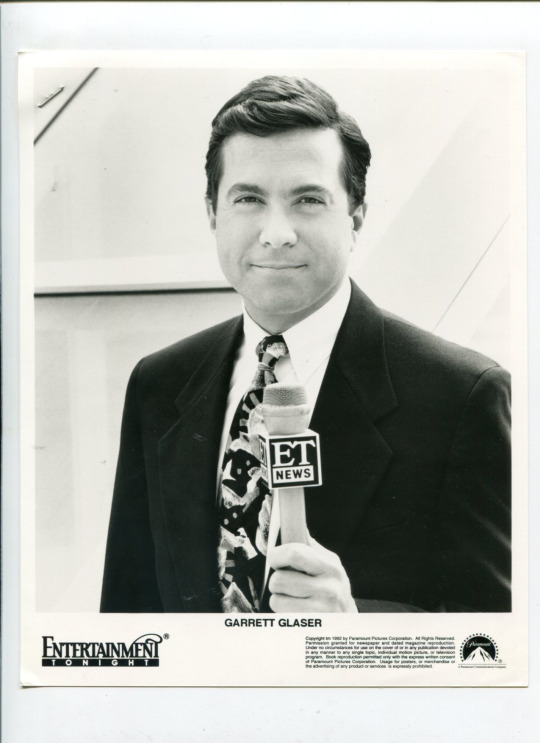
1953 – Garrett Glaser is a retired news reporter who was one of the first US television journalists to "come out" publicly as a homosexual.
His coming out occurred during the course of a speech he made before a large group of TV and radio executives at the 1992 convention of the Radio/TV News Directors Association being held in San Antonio, Texas. Although Glaser co-founded the Electronic Media Task Force of the National Lesbian/Gay Journalists Association (NLGJA) in 1990 and was later out, as well, to fellow journalists, he was not out to the public at large. That changed in 1994, when Glaser disclosed his sexual orientation during a live report on the "Channel 4 News" at KNBC-TV Los Angeles as he was reporting on the death of Elizabeth Glaser (no relation), an AIDS activist who founded the Pediatric AIDS Foundation.
Several weeks later, the Los Angeles Times published a story on the front page of its "Calendar" section about Glaser's status as one of the nation's few openly gay TV reporters.

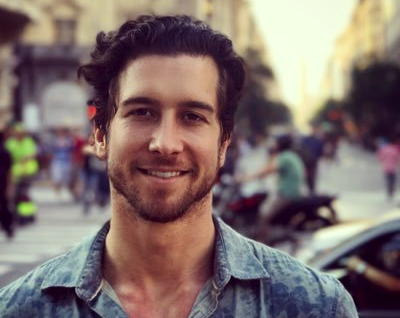
1989 – Evan Todd is an American actor and producer.
Todd grew up in Kissimmee, Florida. He finished his senior year of high school at the North Carolina School of the Arts in Winston-Salem and later graduated from the Juilliard School. Todd also studied at Yale School of Drama and London Academy of Music and Dramatic Art.
In 2007, Todd made his big screen debut as a student in the 2007 film Sydney White. He subsequently appeared in several television films and series such as Grumpy Cat's Worst Christmas Ever (2014), Switched at Birth and Jane the Virgin. In 2014, he originated the role of Kurt Kelly in Heathers: The Musical, when the rock musical had a production Off-Broadway. The following year, Todd co-produced the 2015 Broadway revival of Spring Awakening. A critical success, the rock musical, based on the German play Spring Awakening (1891) by Frank Wedekind, was nominated for both a Tony Award and a Drama Desk Award for Outstanding Revival of a Musical.
In 2016, Todd had a leading role in the comedy film 4th Man Out about a young mechanic who comes out to his straight buddies and to his family. The film received the Audience Choice Award for Best Dramatic Feature at Outfest, and was awarded the Audience Award for Best Narrative Feature at the InsideOut LGBT Film Festival. In March 2017, Todd joined the Broadway cast of Beautiful: The Carole King Musical as King’s songwriter first husband and writing partner Gerry Goffin.
Todd is openly gay. He is the co-founder of stART and artsINSIDEOUT, two summer arts empowerment programs benefiting students from his home town as well as children affected by HIV in South Africa.


2000 – On this date Henry Stuart Matis walked up to the steps of a Mormon church in Los Altos with a note reading "Do not resuscitate" pinned to his shirt, and shot himself.
He was a 32-year-old Gay man and devoted member of the The Church of Jesus Christ of Latter-day Saints, and after a lifetime spent struggling to reconcile the two, explained in a suicide note that "for the first time in over 20 years, I am free from my pains."
"As I believed that I was a Christian, I believed that I could never be Gay," he wrote. "Perhaps my death ... might become the catalyst for much good ... Your actions might help to save many young people's lives."
In the early morning, on the 10th anniversary of Matis' death, a group of local Mormons and others held a memorial vigil for Matis in Los Altos. Starting at Cuesta Park with songs and brief speeches, about 20 people then walked up Grant Road, carrying roses and candles. They ended up on the sidewalk in front of the LDS stake center on Grant Road in Los Altos, where they set up a small memorial display with an image of Matis' tombstone and stories about him and other Gay Mormons who have committed suicide.
Matis' body was found at the center, which serves as the headquarters for South Bay Mormon congregations, at about 7:30 a.m. on Feb. 25, 2000. Robert Rees of the Santa Cruz stake, who served as a spiritual adviser to Matis, said the event was meant "to honor a good man who eft life much earlier than he should have, whose passing was tragic but whose message was one of hope to other people." According to a statement on its Web site, the Mormon church believes that acting on "same-gender attraction" is a sin and Gay church members must remain celibate.
George Cole, a San Francisco resident who is Gay and serves on the executive committee of Affirmation, a support and advocacy group for Gay and Lesbian current and former Mormons, said he didn't know Matis personally but has "lost too many very good friends to suicide. "I know what it is like to seriously consider taking your life," he said. Cole said he left the Mormon church in 2002.
"I chose happiness and fulfillment at the cost of not having the church in my own life," he said. Matis died just a couple of weeks before Proposition 22, the anti-Gay marriage measure in 2000 that preceded 2008's Proposition 8, went before voters, and his death was often portrayed as a political statement, though Matis did not mention the initiative in his suicide note.

2007 – On this date the 79th Academy Awards were hosted by Ellen DeGeneres in Hollywood.



16 notes
·
View notes
Text

DÍA DEL BAILARÍN: POR QUÉ SE CELEBRA EN 28 DE FEBRERO
Cada 28 de febrero se celebra en nuestro país el Día del Bailarín, en honor al nacimiento del argentino Jorge Raul Itovich Donn, considerado en todo el mundo como uno de los más grandes exponentes de la danza clásica del siglo XX.
28/02/2024 •
Bailarín y director artístico nacido en El Palomar, Buenos Aires en 1947, Jorge Donn comenzó su formación a los ocho años en el Instituto Superior de Arte del Teatro Colón, siendo alumno de la emblemática coreógrafa y terapeuta de la danza, María Fux.
A los 15 años conoció a Maurice Béjart, una de las figuras de la danza más importante del mundo, quien estaba de gira en el país con el Ballet del Siglo XX. Quedó tan fascinado con el coreógrafo que, al poco tiempo, decidió mudarse a Bruselas. Allí se consagró como intérprete en la compañía de Béjart, que lo tomó como fuente de inspiración para muchas de sus piezas. Fue partenaire de bailarinas rusas de la talla de Maya Plisetskaya y Natalia Makarova y, a partir de allí, adquirió fama internacional.
En 1976 fue nombrado el director artístico del Ballet del Siglo XX y pocos años más tarde, en 1979, fue galardonado con el Dance Magazine Award, el premio más importante de la danza. En 1988 dejó la dirección artística del Ballet del Siglo XX para fundar su propia compañía, L´Europa Ballet.
Aunque era considerado una estrella en todo el mundo, la sociedad argentina de aquella época lo miraba con cierto prejuicio. Su aspecto pelilargo, su manera de hablar, su forma de vestir y sus demostraciones de afecto, resultaban chocantes para el público local.
Ya habiendo triunfado como bailarín en Europa, adquirió su popularidad definitiva en 1982 con el estreno de la película Los unos y los otros, de Lelouche, en la que interpretaba a Boris Itovich (uno de sus apellidos reales), personaje que lo consagraría para siempre por su interpretación del inolvidable Bolero de Ravel. Otros hitos memorables de su trayectoria fueron Bhakti Nijinsky y Payaso de Dios. A los 39 años se lo pudo ver bailando por última vez, en Madrid, donde interpretó el Bolero y Diva.
En 1989 fue premiado por la Fundación Konex, siendo reconocido como uno de los cinco mejores bailarines de la historia en la Argentina. Además, fue uno de los pocos bailarines latinoamericanos elogiado y reconocido por la élite europea del ballet del siglo XX.
Jorge Donn murió el 30 de noviembre de 1992 en Lausana, Suiza, a los 45 años. Luego de su muerte lo homenajearon muchos artistas y bailarines, entre ellos, Maurice Béjart con su "Ballet por la vida".
En Ciudad Jardín, barrio donde nació el bailarín nació, se nombró un pasaje con su nombre.
Fuente:
©2022 TiempoSur Digital - Río Gallegos, Santa Cruz, Patagonia Argentina
Dirección Lic. Roberto Gustavo Torres. Presidente LJK Editorial S.A. Responsable Editorial
https://www.tiemposur.com.ar/cultura/dia-del-bailarin-por-que-se-celebra-el-28-de-febrero-1
#JorgeDonn #DíaDelBailarín #Danza #Arte #Magia
4 notes
·
View notes
Text
Ten Books To Know Me
Rules: 10 (non-ancient) books for people to get to know you better, or that you just really like.
Tagged by @landwriter, whose list I am pillaging for reading tips. In no particular order:
Paladin of Souls - Lois Bujold. Cordelia Naismith is still my favourite of her characters, but the World of the Five Gods series is so kind. Bujold does religion better than anyone, and in a deeply humanist way. The exact inverse experience of reading Maria Russell’s The Sparrow, though both are phenomenal.
Labyrinths - Jorge Luis Borges. The short story collection version of someone leaning in and going “would you like to hear a fucked up thought about set theory? No? Time?”
Watership Down - Richard Adams.
I was (understandably, I think) leery of books with rabbits after my Mom insisted that the first time I’d broken down sobbing over The Velveteen Rabbit was a fluke, and I’d misunderstood the point of the book, and then tried reading it to me another two times. I cried every time. HER point is that the bunny became real at the end, so it’s a happy book. MY point is that to the boy, the bunny was real the whole time, and that from his point of view it was essentially one of those horribly moralising 19th century fairy tales where the main character’s best friend dies horribly half way through but they go to Heaven so you’re expected to be happy about it. Except in this case, they’re burned alive. Watership Down was the runner-up for most traumatic childhood book about bunnies, but it made no bones about what it was. It knew when it was being brutal, and did it on purpose and well, and I love it still. It also was one of several deeply formative books for introducing me to my favourite trope: stories-in-stories.
The Lord of the Rings - JRR Tolkien. Yes, I know, everyone’s favourite, etc etc. Still, I read it young enough to sort of grow up along it as a trellis. I can’t put any of my favourite medieval works on this list per the rules, but Tolkien’s the reason I could read them as an adult and go oh, but you’re familiar. Also, the older I get, the more the whole ‘no kindness is ever wasted’ element makes me verklempt.
Jackalope Wives - T. Kingfisher. I know, it’s not a book, but you’ll forgive me for that once you’ve read it, for free, right here: https://apex-magazine.com/short-fiction/jackalope-wives/
How good was that? Right?
Gaudy Night - Dorothy L. Sayers. I’ve never related to anything or anyone more than Harriet Vane as I read this, belly down on the grass in the Oxford botanical gardens this summer, in the middle of having a Bad Fucking Time romantically. Sayers’ characters are complicated and human, a little too smart for their own good sometimes, and prone to self-sabotage and overthinking. This book is so profoundly good at capturing the absurdities of love, and the negotiations of self that requires, while still being very tender about the whole thing.
American Gods - Neil Gaiman. I’ve never been in the US for longer than three months at a stretch since I was three, and growing up, it was largely mythological to me. America was Where Stories Happen. I read Stardust first, and possibly like Good Omens best of Gaiman’s, but American Gods put words to a lot of the experience of looking at the US from a one-foot-in-the-door-one-foot-out perspective.
Caedmon - Denise Levertov. Once again cheating, this time it’s a poem:
http://www.southernhumanitiesreview.com/denise-levertov-caedmon.html
I’m also a tremendously basic poetry person in terms of liking Donne, Blake and Eliot. Mmm, weird feelings about God and/or WWI.
The Lacuna - Barbara Kingsolver. Possibly my favourite ending in anything I’ve read ever? I can’t say anything concrete without spoiling it, but the book starts out big, and then, at the end, gets narrower, and narrower down to a fine point, and - look, it’s very good. It has opinions about how we tell stories. The Bean Trees is also very good, though it’s been near a decade since I read that one, and I remember it less.
Frankenstein - Mary Shelley. Look, it has stories within stories, and a big, gothic, sweep of thought and emotion. It feels big, and deep, and bigger and deeper every time I go back.
Special mention because almost everyone who follows me is into Sandman: Doomsday Book - Connie Willis.
Would you like to CRY about the middle ages, and how people were people always and how no kindness is wasted? I bet you would. Maybe only read this if you’re feeling stable about pandemics again, though. I’m giving it another few months personally before going back.
-
I am, as usual, a tiny bit late to the tagging game and have lost track of who’s already been tagged. HOWEVER, I have a bunch of lovely amazing mutuals and new followers and if you want, please consider yourself tagged (that way I can also see who’s interested in maybe being tagged in the future, and get to know you better?)
#special mentions to half a dozen exceptional sci-fi/fantasy series i had to cut#Le Guin's left hand of Darkness#Ann leckie's ancillary justice#and Seth Dickinson's traitor Baru cormorant#particularly#also#landwriter's prev tags: tamora pierce#tiny six year old me spent SO MUCH TIME hitting things with sticks pretending to be a knight
17 notes
·
View notes
Text
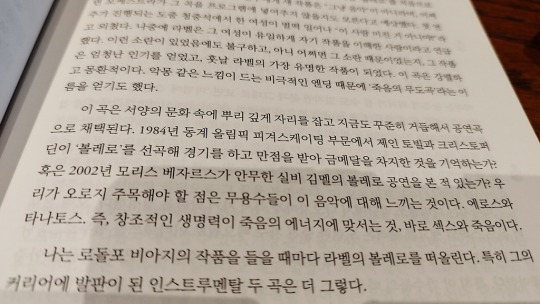
"볼레로와 로돌포 비아지"
'탱고스토리 : 우리를 춤추게 한 악단' 책 내용 중 로돌포 비아지(Rodolfo Biagi) 편에서 저자는 그의 음악을 들으면 '라벨 - 볼레로'가 떠오른다며 섹스와 죽음 운운해놨던데, 개인적으론 딱히 공감이 가진 않았다.
비아지 음악이 강박에 가까운 마르까또로 도배돼 있긴 하지만, 그게 볼레로와 뭔 상관인지 납득이 안간다는… 암튼 덕분에 볼레로에 맞춰 추는 두가지 안무를 유튜브로 감상.
우선 1984년 동계 올림픽에서 제인 토빌(Jayne Torvill)과 크리스토퍼 딘(Christopher Dean)의 피켜 스케이팅. 이거는 내가 거의 아는 게 없는 분야라 구글 검색하니 "전설적인 안무"로 엄청 유명하더만. 뒤늦게 유튜브 찾아서 본 소감 또한 문외한이 봐도 이우라가 느껴지긴 했다.
또 하나는 모리스 베자르스가 안무한 실비 길렘(Sylvie Guillem)의 볼레로 공연. (책에는 '실비 김멜'이라 써 있던데 오자인듯?) 이거는 나도 친숙하다. 어릴 때 TV에서 '사랑과 슬픔의 볼레로'란 제목으로 외국 드라마를 방영했기 때문.
오리지널 필름에서 춤 줬던 댄서는 호르헤 돈(Jorge Donn)으로 1992년 45세에 에이즈로 사망.
유튜브 검색하면 이 분 외 여러 댄서가 같은 안무로 공연한 게 있다. 여성 댄서 중에는 마이야 플리세츠카야(Maya Plisetskaya)을 영상을 예전에 본 적 있다. (러시아가 아닌) 소련의 볼쇼이 극장 무용수였고 2015년에 심근경색으로 89세에 사망.
실비 김멜은 잘 몰랐다가 이 책땜에 찾아서 봄. 화질이 좋은 거로 미뤄 아마도 가장 근래에 속하는 공연이 아닐까 싶은…
youtube
youtube
2 notes
·
View notes
Text
Klaus Nomi, né Klaus Sperber est un chanteur allemand décédé le 06 août 1983 à New York.

Cet artiste souvent très visuel de par son look immanquable venait pourtant de l’Opéra et avait fait des études de musique. Sa reprise d’un air de l’opéra baroque d’Henry Purcell «What Power Art Thou ? : « The Cold Song » avait marqué les esprits à son époque. Et sa tessiture fluide et variée a pu être diversement appréciée du grand public, tout comme son répertoire intégrant aussi la New Wave, la SynthPop et les autres musiques électroniques. Il a été repéré par David Bowie est un des premiers visages célèbres du SIDA, aux côtés de Rock Hudson, du danseur argentin Jorge Donn, et toutes les autres stars de la constellation... Les eighties n’ont pas toujours été faciles comme on serait tenté de le croire. Bien que mort jeune, Klaus Nomi a continué à hanter les esprits. Matthieu Chedid (M) qui lui a emprunté sa coiffure atypique. Ainsi de Lady Gaga qui a adopté et adapté son look improbable. On pourrait tout autant citer Madonna et bien d’autres ! 39 ans qu’il s’en est allé ! Chapeau bas The Artist...
20 notes
·
View notes
Text
Introduction/Who am I?
Okay, so since I’m back on here again in the ongoing exodus, I thought I’d better do an introductory post for anyone who wants to follow as well as refresh old friends and followers. Open to new friendships so feel free to send me asks, reply, or whatever if you want to talk.
Francesca (Fran, Frankie for short)
Englishwoman
Lesbian, f4f
Cat person (see previous bullet)
I enjoy writing although I’m aware I’ll probably never be published so it’s mostly just something I do for my own personal catharsis and expression.
Night owl
Haute couture enjoyer
Learning French (c. B1, B2 reading level), want to learn European Portuguese, Spanish, Latin, Dutch, interested in language acquisition more broadly
I’ve always been a voracious reader so some favourite authors, poets and essayists: Sappho, Gustave Flaubert, Charles Baudelaire, Arthur Rimbaud, Théophile Gautier, Gérard de Nerval, Marcel Proust, Alain-Fournier, Jorge Luis Borges, Camilo Castelo Branco, Yukio Mishima, Jean Genet, Anaïs Nin, Novalis, Simone Weil, Jacques Lacan, Plato, James Joyce, Emily Brontë, Jane Austen, Oscar Wilde, George Orwell, Vladimir Nabokov, John Donne, F. Scott Fitzgerald, Emily Dickinson, Fyodor Dostoevsky. My favourite novel (and maybe favourite work of art full stop) is Madame Bovary.
Cinema is my other great passion and one I’ve spent the last few years particularly delving into - some favourite directors/auteurs: Carl Dreyer, Michael Powell (& Emeric Pressburger), Manoel de Oliveira, Alfred Hitchcock, Howard Hawks, Yasujiro Ozu, Francis Ford Coppola, Brian de Palma, Raoul Ruiz, Douglas Sirk, Josef von Sternberg, Ernst Lubitsch, Erich von Stroheim, F.W. Murnau, Fritz Lang, Claude Chabrol, Éric Rohmer, Jean Renoir, Max Ophüls, Eugène Green, Rainer Werner Fassbinder, Luis Buñuel, Pedro Costa, Luchino Visconti, Val Lewton, Dario Argento, Ingmar Bergman, Nagisa Oshima, Wojciech Has. My favourite film is A Matter of Life and Death (1946).
My favourite actresses: Isabelle Huppert (in love with her), Catherine Deneuve, Sophia Loren, Joan Crawford, Barbara Stanwyck, Susan Hayward, Marlene Dietrich, Isabelle Adjani, Sissy Spacek, Vivien Leigh, Penélope Cruz, Fanny Ardant, Monica Bellucci, Emmanuelle Béart, Sandrine Bonnaire
Favourite music: Erik Satie, Claude Debussy, Serge Gainsbourg, Sergio Mendes, Miles Davis, John Coltrane, Charles Mingus, Herbie Hancock, Ella Fitzgerald, Billie Holiday, Dusty Springfield, Nina Simone, Carpenters, Stevie Wonder, Prince, Kate Bush, Cocteau Twins, Björk, Talking Heads, The Cure, Boards of Canada, Joy Division, New Order, The Velvet Underground, Massive Attack, Portishead, Manic Street Preachers
Also enjoy art/painting, aesthetics, fashion, memes, food and (maybe too much) drink. Lots more that I can’t think of at the moment so maybe a sequel in the future when I feel like being inward-looking again?
#introduction#reference#intro post#language learning#cinema#literature#art#francescaderochefort#about me#language acquisition
8 notes
·
View notes
Text
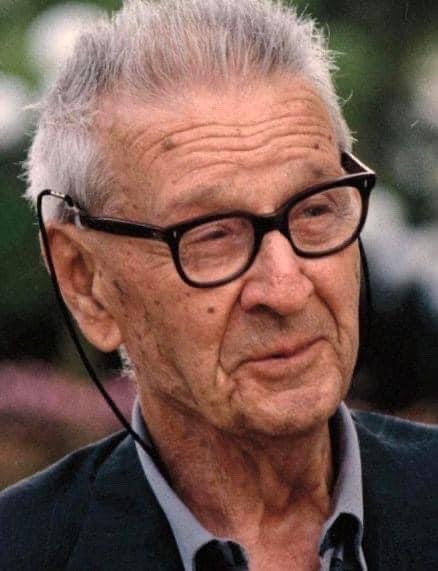
"Ho saputo cosa mio padre aveva fatto tanti anni prima solo nel 1988, quando gli fu fatta visita da alcune donne ebree ungheresi e precisamente quando la signora Lang e il marito si presentarono a casa sua.
Telefonarono qualche giorno prima per fissare un appuntamento; avevano studiato un po' d'italiano apposta per il viaggio in Italia, non semplice, perché il muro di Berlino pur scricchiolante era ancora lì. Vennero in rappresentanza di decine di famiglie salvate a suo tempo da uno strano console spagnolo, Jorge Perlasca.
Raccontarono la loro storia e compresi che mio padre li aveva salvati; ma andarono avanti con il loro racconto e cominciai ad intravedere oltre a loro decine, centinaia, forse migliaia d'altre persone. E devo confessare che entrai in crisi chiedendomi se conoscevo realmente la persona con cui avevo vissuto per oltre trent'anni, la mia età di allora.
Ma un piccolo grande fatto mi aprì gli occhi, mi fece ragionare e pensare a quanto successo: la signora, assieme ad altri piccoli regali, portò tre pacchetti che aprì con grande attenzione ed emozione. All'interno un cucchiaino, una tazzina e un piccolo medaglione: gli unici oggetti, aggiunse, che la famiglia aveva salvato dal disastro della seconda guerra mondiale. Voleva darli a mio padre che però non li voleva prendere: “Signora, deve darli ai figli e poi i figli li daranno ai nipoti a ricordo della famiglia.”
La signora se ne uscì con una frase che ancora oggi mi emoziona: 'Signor Perlasca, li deve tenere lei perché senza di lei non avremmo avuto né figli né nipoti.”
Franco Perlasca
#coraggio#frasi forza#tumblr#storie#storie incredibili#per non dimenticare#amore#storie meravigliose#lacrime#brividi#eroi
4 notes
·
View notes
Text

Non sono sicuro che io esista, in realtà. Sono tutti gli scrittori che ho letto, tutte le persone che ho incontrato, tutte le donne che ho amato, tutte le città che ho visitato.
|| Jorge Luis Borges
1 note
·
View note
Text
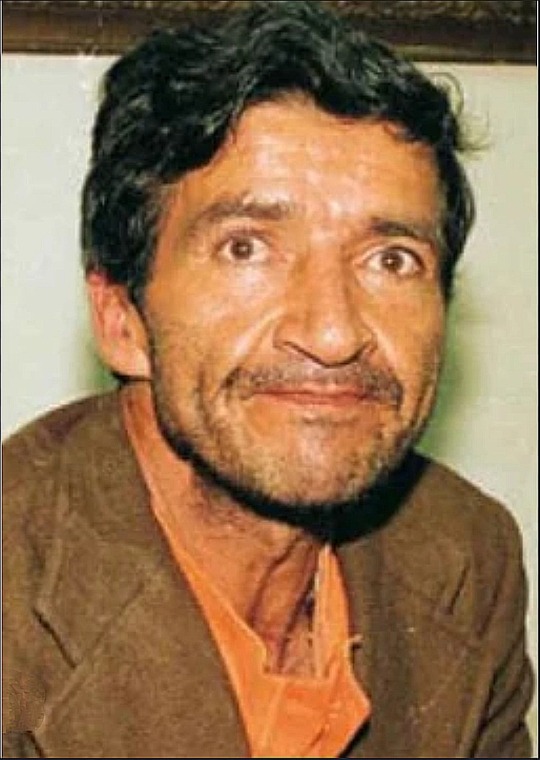
Pedro Alonso López, soprannominato il Mostro delle Ande (Santa Isabel, 8 ottobre 1948), è un serial killer colombiano. È uno dei serial killer più sanguinari della Colombia assieme a Luis Alfredo Garavito e Daniel Barbosa.
Pedro Alonso Lopez nacque a Tolima, in Colombia, l'8 ottobre 1948. Era il settimo dei tredici figli di Benilda Lopez de Castañeda, una prostituta. L'infanzia gli fu infelice a causa delle pessime condizioni di vita, della povertà estrema e per il comportamento violento, iracondo e autoritario della madre. Inoltre proprio in quegli anni cadeva il periodo della Violencia, che consisteva in una insurrezione sociale scoppiata poco tempo prima a causa del delitto a sfondo politico di Jorge Eliécer Gaitán Ayala, leader del Movimento Populista, avvenuto il 9 aprile 1948. Nell'arco di 10 anni la Violencia farà più di 200.000 vittime; il tasso di omicidi era altissimo e la gente non poteva passeggiare sicura per strada.
A 8 anni venne cacciato di casa: era stato scoperto dalla madre mentre molestava la sorella minore. Riuscì a trovare la via per tornare a casa ma, il giorno successivo, con un autobus lo abbandonò a più di 200 miglia di distanza da casa.
Lopez da quel momento visse vagabondando per strada, tirando avanti con piccole elemosine e furtarelli in mezzo al pericoloso clima da guerra civile. Un giorno Pedro venne avvicinato da un vecchio che, con la scusa di aiutarlo, lo rapì e lo sodomizzò per ore. Superata l'esperienza, un anno dopo si spostò a Bogotà (la capitale della Colombia), dove venne trovato e adottato da una coppia di americani benestanti. Venne così mandato a scuola, ma all'età di 12 anni subì un abuso sessuale da un insegnante. Pedro così scappò dalla famiglia americana con un po' di soldi con sé e tornò per strada. Un po' di tempo dopo iniziò la sua carriera criminale, che lo porterà ad essere un abilissimo ladro di automobili. Nel 1958 il periodo della Violencia finì e il clima stava tornando alla normalità.
Nel 1969, all'età di 21 anni, venne arrestato dalla polizia e condannato a sette anni di reclusione per furto d'auto. Due giorni dopo il suo arresto fu violentato da quattro detenuti. Da lì a poco si vendicò tagliando la gola a tre di essi con un coltello rudimentale. Così gli vennero aggiunti altri due anni di carcere. Nel 1978 uscì dal carcere. Lopez era impazzito a causa dell'infanzia bruciata, della figura di sua madre, degli stupri ricevuti, degli omicidi e del carcere. Aveva sviluppato inoltre una forma di misoginia: infatti odiava le donne, che gli ricordavano la figura della madre. Non si sposò mai e divenne dipendente da riviste di pornografia esplicita. Dalla Colombia si spostò in Perù, dove tornò ad uccidere.
Come indicato sopra, Pedro Lopez uccideva per misoginia; le vittime erano tutte donne, ragazzine o bambine. Solitamente le attirava a sé cercandole in giro e pedinandole, per poi conoscerle meglio, diventandone il fidanzato e regalando loro qualcosa, ad esempio uno specchietto o piccoli oggetti. Poi le attirava con una scusa banale in un luogo isolato senza che sospettassero di nulla e lì le assaliva stuprandole selvaggiamente per ore. Infine nel giro di cinque o quindici minuti le strangolava a mani nude mentre le guardava negli occhi, cosa che lo eccitava molto. Tutti gli omicidi avvenivano di giorno o all'alba, ma non di notte: secondo lui il buio gli impediva di vedere bene il momento dell'omicidio. Spesso controllava se le vittime fossero realmente morte o aspettando che riprendessero i sensi o mettendo loro davanti al viso uno specchietto: se si condensava, voleva dire che respiravano ancora e che dovevano essere nuovamente soffocate.
Dopo averle uccise passava delle ore in compagnia del cadavere. A volte li accumulava e li faceva sedere su una tavola imbandita, gli offriva del tè e ci chiacchierava amichevolmente. Quando si stancava li seppelliva in fosse scavate già pronte, spesso in gruppi di 3 o 4 morti perché, secondo lui, amavano la compagnia. Infine tornava ancora ad uccidere con il ritmo di circa tre o più uccisioni a settimana.
In Perù uccise almeno 100 donne appartenenti alle varie tribù Indios. Poi venne scoperto dalla tribù indigena degli Ayacuchos mentre cercava di violentare una bambina di 9 anni. Gli indigeni lo catturarono e lo seppellirono nel terreno, lasciandogli scoperta la testa. Se non fosse intervenuta una missionaria americana che spiegò agli Ayacuchos che la sua morte era irreligiosa, lo avrebbero cosparso di un liquido che attirava gli insetti e l'avrebbero fatto sbranare vivo.
Gli Ayaucuchos consegnarono Lopez alla polizia, che reputò di poco conto l'affare con la tribù indigena e lo deportò in breve tempo in Ecuador. Così fu libero di girare indisturbato tra la Colombia e l'Ecuador, uccidendo in qualche anno 100 donne in Colombia e almeno 110 nell'Ecuador. Solo in quel momento la polizia si allarmò a causa delle decine di morti e sparizioni di giovani donne proprio dove passava Lopez; ciò nonostante si attribuirono le sparizioni al mercato nero della prostituzione e Lopez non venne mai arrestato, sia a causa della conclusione dell'indagine sbagliata sia per il suo affinato modus operandi. Come nel caso di Luis Alfredo Garavito, un colombiano che uccise almeno 140 bambini, rimase imprendibile per molto tempo. Ma anche lui si fece arrestare nell'Ecuador per un banale errore. Era l'aprile del 1980.
Pedro Alonso Lopez si fece bloccare e arrestare dopo un fallito tentativo di rapimento e stupro ai danni di una bambina di 10 anni di nome Maria: la madre, Carlina Ramon Poveda, aveva notato il killer mentre si allontanava con la figlia nella zona del mercato. Le sue urla attirarono i presenti, che lo fermarono. In carcere si rifiutò di rispondere alle domande degli investigatori. Era già sospettato di 4 omicidi. Le vittime, i cui cadaveri vennero trovati in una fossa a seguito di uno straripamento ad Ambato, erano state strangolate così forte che gli occhi erano schizzati fuori dalle orbite; il ritrovamento era avvenuto l'anno prima.
Solo dopo un po', con l'aiuto di un padre missionario, venne fatto confessare: raccontò alla polizia gli oltre 100 omicidi del Perù, i 100 della Colombia e gli oltre 110 dell'Ecuador, la sua infanzia e il suo modus operandi. La polizia era un po' scettica di fronte ad un numero così alto di omicidi: vista la diffidenza nei suoi confronti, accompagnò gli agenti in alcuni dei luoghi dove aveva seppellito alcune delle sue vittime: nel solo Ecuador se ne trovarono in poco tempo 53 che, aggiunti agli altri 4 di cui era sospettato e ai 3 commessi in carcere, erano almeno 60. Gli altri 40 circa non vennero trovati, nonostante Lopez avesse accompagnato i poliziotti nei loro luoghi di sepoltura; è normale che succeda ciò: il territorio è sempre soggetto a frane e forti alluvioni, che disperdono i corpi.
Gli oltre 200 omicidi consumati in Perù e in Colombia non vennero mai trattati poiché Lopez non venne estradato dall'Ecuador.
Nel 1980 si svolse il processo: Pedro Alonso Lopez venne sentenziato colpevole di almeno 110 omicidi e, nonostante il suo fanatismo mentale, venne giudicato capace di intendere e di volere. Lopez era quindi sano di mente. La pena prevista era il carcere a vita: nell'Ecuador non esiste la pena di morte. Mentre si trovava in carcere ad Ambato, concesse alcune interviste, che hanno contribuito a farlo conoscere e a ispirare documentari sulla sua controversa figura; la più famosa è quella concessa al giornalista Ron Laytner nel gennaio 1999. In queste interviste afferma continuamente di essere “L'Indimenticabile Uomo del Secolo”, con i suoi oltre 310 omicidi, e che sarebbe stato rilasciato presto per la sua buona condotta; le altre sono state pubblicate sul Chicago Tribune (13 luglio 1980), sul Toronto Sun e sul Sacramento Bee (21 luglio 1980), in altri giornali nordamericani e su altre pubblicazioni.
Il 31 agosto 1994 venne rilasciato dal carcere, ma la polizia lo riarrestò come immigrato clandestino; le autorità lo portarono in un centro psichiatrico a Bogotà, in Colombia dove gli fu fatta una perizia psichiatrica, che stabilì che era sano di mente. Nel 1998 è stato nuovamente liberato su cauzione e deportato al confine colombiano.
Una settimana dopo la polizia lo ha trovato nuovamente in Ecuador: lo ha allontanato per la seconda volta.
Nel 2002 le autorità gli hanno attribuito un nuovo omicidio, ma Lopez nel frattempo aveva fatto perdere le sue tracce; non si sa se sia vivo o morto.
Fonte: https://it.m.wikipedia.org/wiki/Pedro_Alonso_L%C3%B3pez
youtube
#pedroalonsolópez#serialkiller#strangolatoreseriale#necrofilia#torture#pedofilo#occultamentodicadaveri#vilipendiodicadavere#ladrodimacchine#immigrazioneillegale#stupratoreseriale#sequestridipersona#molestiesessuali#fugadalleautoritá#vidistruggosenzapietá#schifosobastardo#nonsfuggiraiallamiaira#sonovendetta#Spotify#Youtube
0 notes